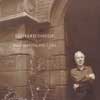Bach Partitas Nos 3, 1 and 6
Bach playing with a genuine inner glow, capricious, spontaneous and imaginative
View record and artist detailsRecord and Artist Details
Composer or Director: Johann Sebastian Bach
Genre:
Instrumental
Label: Nonesuch
Magazine Review Date: 7/2003
Media Format: CD or Download
Media Runtime: 65
Mastering:
Stereo
DDD
Catalogue Number: 7559-79698-2

Tracks:
| Composition | Artist Credit |
|---|---|
| (6) Partitas, Movement: No. 1 in B flat, BWV825 |
Johann Sebastian Bach, Composer
Johann Sebastian Bach, Composer Richard Goode, Piano |
| (6) Partitas, Movement: No. 6 in E minor, BWV830 |
Johann Sebastian Bach, Composer
Johann Sebastian Bach, Composer Richard Goode, Piano |
| (6) Partitas, Movement: No. 3 in A minor, BWV827 |
Johann Sebastian Bach, Composer
Johann Sebastian Bach, Composer Richard Goode, Piano |
Author: Rob Cowan
This second volume of Richard Goode’s complete set of Bach Partitas has been a fair time coming, but has been well worth the wait (the first volume was reviewed in March 1999). Here as before one senses a distinguished lineage, a tradition of Bach piano playing with a Classical-Romantic bent that reaches back to Harold Samuel via Borowsky, Horszowski, Schnabel and Serkin. Like them (though not specifically in the Partitas) Goode treats line as paramount, stressing counterpoint only where and when it serves an expressive end, as in the First Partita’s Allemande. Like Schnabel, Goode can occasionally accelerate a phrase to focus its place in the larger context. The use of crescendo is subtle yet telling (the Corrente) and the way phrases breathe, suggests hours spent focusing on a precise rubato. You notice this especially in the Third Partita’s Sarabande whereas the Sarabande of the First Partita is a fine example of what I might call sublime cool, courtly yet aristocratic and with carefully terraced dynamics.
This is glorious music, and there’s barely a second when you are not aware of that fact. As I’ve said, everything flows from the logic of the line, and when perspectives do change (at around 46 seconds into the Third Partita’s opening two-part Fantasia, for example, where the lower voice takes the lead) the option seems inevitable. Arpeggiated passages are both sonorous and crystal-clear, especially in the Sixth Partita, where the Sarabande assumes a level of intensity that reminded me of Beethoven’s Diabelli Variations (as in the Largo molto espressivo Var 31).
Everything essential to the spirit is here: dance and reverie, clarity and form, digital brilliance. Goode never forces his tone and although he has a secure sense of rhythm – the faster dances trip along rather than rush – there is no hint of the obsessive drive indulged by the post-Gould school. That, too, can be exciting, but Goode’s inner explorations of Bach will, I suspect, yield longer-term satisfaction, just as Murray Perahia’s have done. Though quite unalike in detail, the two players are more or less on an equal footing, this new CD being perhaps the finest solo Bach recital to appear this year so far. The sound is clean and luminous.
This is glorious music, and there’s barely a second when you are not aware of that fact. As I’ve said, everything flows from the logic of the line, and when perspectives do change (at around 46 seconds into the Third Partita’s opening two-part Fantasia, for example, where the lower voice takes the lead) the option seems inevitable. Arpeggiated passages are both sonorous and crystal-clear, especially in the Sixth Partita, where the Sarabande assumes a level of intensity that reminded me of Beethoven’s Diabelli Variations (as in the Largo molto espressivo Var 31).
Everything essential to the spirit is here: dance and reverie, clarity and form, digital brilliance. Goode never forces his tone and although he has a secure sense of rhythm – the faster dances trip along rather than rush – there is no hint of the obsessive drive indulged by the post-Gould school. That, too, can be exciting, but Goode’s inner explorations of Bach will, I suspect, yield longer-term satisfaction, just as Murray Perahia’s have done. Though quite unalike in detail, the two players are more or less on an equal footing, this new CD being perhaps the finest solo Bach recital to appear this year so far. The sound is clean and luminous.
Discover the world's largest classical music catalogue with Presto Music.

Gramophone Digital Club
- Digital Edition
- Digital Archive
- Reviews Database
- Full website access
From £8.75 / month
Subscribe
Gramophone Full Club
- Print Edition
- Digital Edition
- Digital Archive
- Reviews Database
- Full website access
From £11.00 / month
Subscribe
If you are a library, university or other organisation that would be interested in an institutional subscription to Gramophone please click here for further information.




